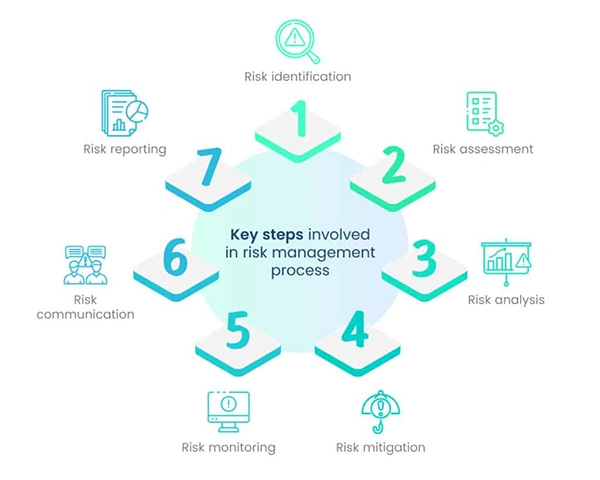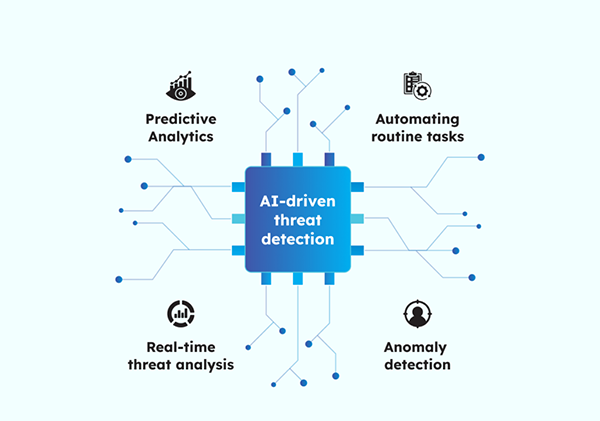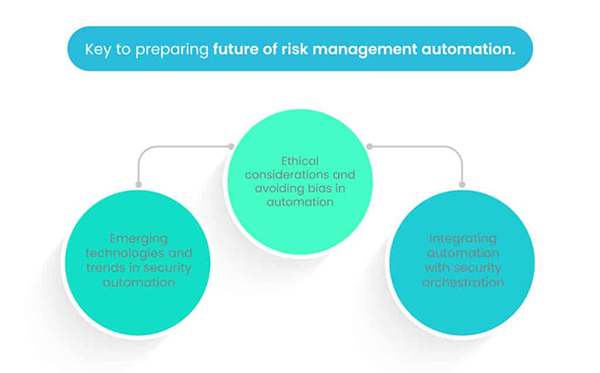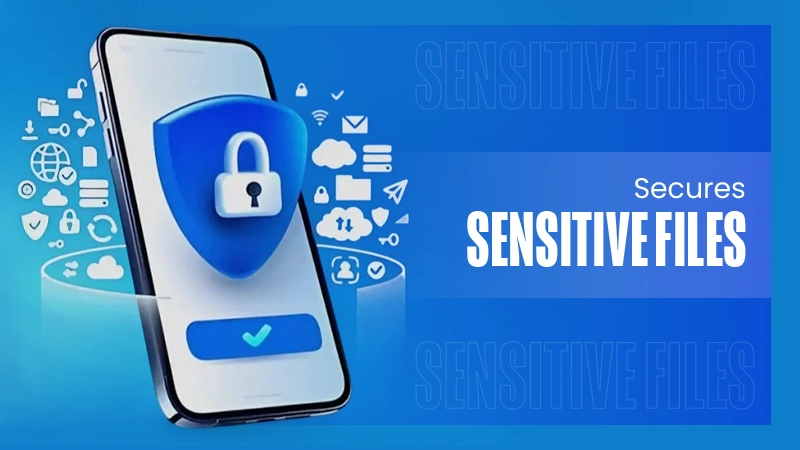The digital world is always evolving at a fine pace, and so are the cyber threats it poses to the business. With the surge of interconnected systems, cyberattacks have become more sophisticated, frequent, and costly. This makes it imperative for businesses to adapt to the proactive strategy to safeguard their digital assets.
In fact, it is getting so costly that according to Forbes, the total cost of the damages incurred by cybercrime is estimated to reach $10.5 trillion by 2025.
These frightening numbers have led to more sophisticated risk management approaches, which are more than just about responding to the attacks, but also working proactively to prevent them.
So, in this read, we will explore how automation is emerging as a crucial tool in this paradigm shift, transforming digital risk management from a defensive stance into a proactive, preventive strategy.
Let’s start!
Automation’s Critical Role in Risk Management

The shift from traditional defence tactics to proactive prevention is essential in digital risk management, especially as cyber threats evolve in both volume and sophistication. Many businesses and cybersecurity experts are now looking to automation to bridge the gap.
Automated systems have proven to be effective in continuously monitoring potential risks, detecting unusual behaviours in real time, and identifying patterns that could signify a threat. With these capabilities, businesses can respond swiftly to cyber incidents while also preempting attacks by recognizing warning signs early.
For professionals seeking to deepen their understanding of proactive measures in digital security, an online masters of cyber security offers insights into advanced strategies. This degree program typically covers a range of topics that align well with today’s defence needs, including threat detection, incident response, and the integration of automated tools in risk management.
Students gain a comprehensive understanding of how automation is transforming the field and develop skills to implement these technologies in real-world scenarios, making them valuable assets to any organisation in need of robust digital protection.
Detecting Threats with Machine Learning and AI

Machine learning (ML) and artificial intelligence (AI) are two key technologies driving automation in cybersecurity. By analysing vast amounts of data and learning from patterns, ML algorithms can distinguish between typical user behavior and potentially harmful activities. For example, if an employee’s account is suddenly accessed from an unusual location or at an odd time, AI-driven systems can recognize this as an anomaly and flag it for further inspection.
This proactive approach allows companies to identify and address threats before they become full-scale incidents.
AI and ML also support automation by minimizing the need for manual data analysis, which can be time-consuming and prone to human error. With AI-based systems constantly monitoring networks, unusual behavior is flagged in real-time, allowing cybersecurity teams to act quickly.
Automating Response and Mitigation Strategies
When it comes to responding to a cyber incident, time is of the essence. Automated response tools can significantly reduce response times by immediately enacting containment and mitigation protocols upon detection of a threat. For instance, if a system detects unauthorised access, an automated tool can isolate the affected devices or accounts to prevent further spread. By instantly implementing these actions, organizations limit the potential damage from a cyberattack and avoid widespread disruption.
Automated response mechanisms are not only about speed but also consistency. Human responses to cyber incidents can vary depending on the situation, experience, or individual judgement. Automation brings a standardized approach, ensuring that responses to cyber threats are consistent and thorough across all incidents.
Automated systems can follow predefined protocols tailored to specific types of attacks, such as phishing or malware, ensuring that responses are optimized for each situation. This streamlined process enhances security and reduces the risk of error during high-stakes situations.
Do You Know?
There were about 2,365 cyberattacks in 2023, and the year also saw a 72% increase in data breaches since 2021, which held the previous all-time record.
Reducing Operational Costs with Automated Risk Management
Another advantage of automation in digital risk management is cost reduction. Traditional risk management approaches often require substantial resources, as teams must manually monitor, analyze, and respond to potential threats. These processes are not only time-consuming but also financially demanding, as they require skilled personnel and extensive resources.
Automation, on the other hand, can handle many of these tasks with minimal human intervention, lowering the operational costs associated with cybersecurity.
By automating repetitive and data-heavy tasks, organizations can allocate their resources more effectively, focusing on strategic areas that require human expertise. In addition, the continuous monitoring provided by automated systems reduces the likelihood of costly breaches, which can be financially devastating for businesses.
Enhancing Compliance and Regulatory Adherence
In many industries, regulatory compliance is a critical component of digital risk management. Organizations must adhere to a range of cybersecurity standards and regulations, such as the General Data Protection Regulation (GDPR) in Europe or the Health Insurance Portability and Accountability Act (HIPAA) in the United States.
Automation can assist in maintaining compliance by ensuring that all security protocols are consistently applied across an organization’s systems and networks.
Automated tools, expertly deployed by Baltimore-managed IT, can be configured to monitor compliance continuously, identifying any areas that may fall short of regulatory requirements. These tools, backed by industry professionals, can also generate detailed logs and reports that provide evidence of compliance for audits and assessments.
This automated compliance management not only simplifies the process but also reduces the risk of fines and penalties associated with regulatory breaches. By integrating automation into their compliance strategies, businesses can stay ahead of changing regulations and ensure that their cybersecurity practices meet or exceed industry standards.
Preparing for the Future: Automation’s Evolving Role in Cybersecurity

As cyber threats continue to evolve, the role of automation in digital risk management will only become more significant. Future advancements in AI, machine learning, and automation tools will enable organizations to predict potential threats with even greater accuracy and implement preventive measures that go beyond today’s capabilities.
Organizations that invest in automation now are not only strengthening their current cybersecurity posture but also preparing for a future where cyber defense strategies must be more adaptable and resilient.
While automation provides substantial benefits, it’s important to recognize that it is a complement, not a replacement, for human expertise. Skilled cybersecurity professionals are essential in interpreting the data generated by automated systems, making strategic decisions, and developing proactive security policies.
By integrating automation with skilled human oversight, companies can create a layered approach that balances the strengths of technology with the insights of trained professionals.
All in all, the integration of automation into digital risk management represents a transformative shift in how businesses approach cybersecurity. By focusing on prevention rather than merely defence, organisations can better protect themselves against the ever-growing landscape of cyber threats.
Automation empowers companies to detect, respond to, and mitigate risks swiftly, reducing the potential impact of cyber incidents and ensuring regulatory compliance.










